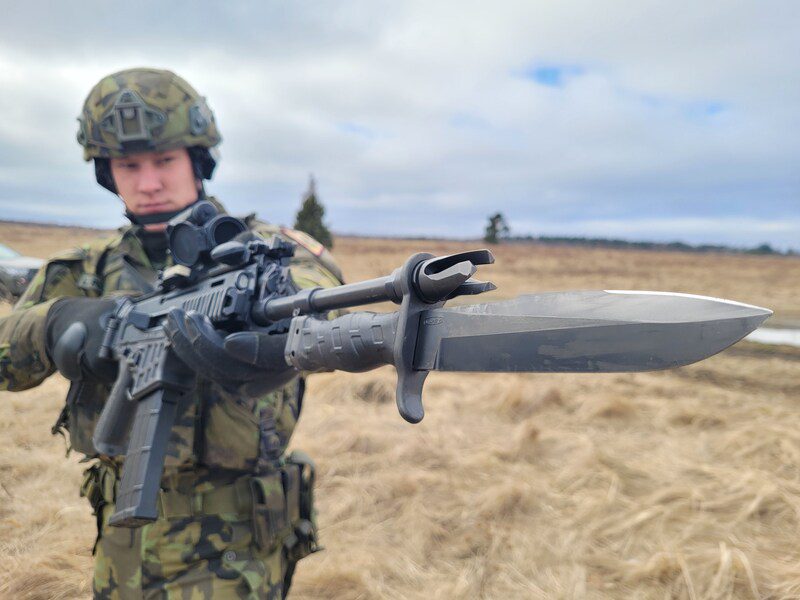This content discusses the evolution of infantry weapons from bayonets to assault rifles. It explores the significant advancements throughout history, highlighting key milestones that revolutionized warfare. The article covers the early innovations of bayonets and muskets, the rise of rifles with increased accuracy and range, the advent of machine guns and submachine guns, and the dominance of assault rifles. It also touches on modern advancements in infantry weapons beyond assault rifles, including attachments and accessories, as well as the integration of digital technologies and smart systems. The conclusion emphasizes that the evolution of infantry weapons has continuously reshaped the battlefield and promises even more significant advancements in the future.
From Bayonets to Assault Rifles: The Evolution of Infantry Weapons
Introduction
Throughout history, the development of weapons has played a crucial role in shaping the outcomes of conflicts. From the early days of hand-to-hand combat with bayonets to the modern world of assault rifles, the evolution of infantry weapons has been a constant process of innovation and refinement. This article explores the significant advancements in infantry weapons over time, highlighting key milestones that have revolutionized warfare.
Early Innovations: Bayonets and Muskets
In the 17th and 18th centuries, infantry soldiers mainly relied on the combination of bayonets and muskets. The bayonet, a blade attached to the muzzle of the musket, allowed infantrymen to transform their long-range weapon into a close-quarter combat tool. This integration allowed for swift transitions between firing at a distance and engaging in hand-to-hand combat.
However, muskets had limitations. They were slow to reload and were not very accurate, requiring soldiers to stand in tight formations and fire simultaneously to increase their chances of hitting the enemy. This tactic, known as line infantry, dominated warfare until new technologies emerged.
The Rise of Rifles: Accuracy and Range
The 19th century witnessed a significant shift in infantry weapons with the introduction of rifles. Rifles offered increased accuracy and range compared to muskets, thanks to advancements such as rifling—a helical pattern of grooves inside the barrel, which imparted spin to the bullet. The spin stabilized the projectile, improving its flight path and accuracy.
Rifles like the Minié rifle, invented by Claude-Étienne Minié in 1849, further enhanced the efficiency of infantry soldiers. Its conical bullet and expanding gas seal greatly improved accuracy, range, and reliability. This marked the transition from smoothbore muskets to rifled weapons.
The Advent of Machine Guns: Firepower Revolution
At the turn of the 20th century, the emergence of machine guns revolutionized infantry warfare. Machine guns such as the Maxim Gun, invented by Hiram Maxim in 1884, were capable of sustaining a rapid and continuous fire. These weapons unleashed a tremendous amount of firepower, effectively suppressing enemy positions and causing high casualties.
Machine guns, however, were heavy and required crews to operate them. This led to the development of lighter variants like submachine guns during World War I. Submachine guns, such as the German MP18 and the British Sten Gun, offered increased mobility and rate of fire, making them highly effective in close-quarters combat.
The Era of Assault Rifles: Balancing Accuracy and Firepower
In the mid-20th century, assault rifles emerged as the dominant infantry weapon. Combining the best features of rifles and submachine guns, assault rifles provided soldiers with a compact, lightweight weapon capable of automatic or semi-automatic fire.
The most iconic assault rifle, the AK-47, developed by Mikhail Kalashnikov in 1947, became the symbol of Soviet and later, Russian military might. With its reliable operation, simplicity, and low production cost, the AK-47 spread widely across the globe, influencing the design of future assault rifles.
Modern Advancements: Beyond Infantry Weapons
In recent years, advancements in technology have led to the development of new infantry weapons beyond assault rifles. The introduction of various attachments and accessories, such as optical sights, suppressors, and under-barrel grenade launchers, has enhanced the versatility and effectiveness of infantry units.
Moreover, the integration of digital technologies and smart systems is shaping the future of infantry weaponry. Concepts like the “Future Soldier” are being explored, incorporating exoskeletons, advanced optics, nanotechnology, and artificial intelligence to create a highly capable and connected infantry force.
Conclusion
The evolution of infantry weapons from bayonets to assault rifles has been a continuous process of innovation driven by the need for increased accuracy, firepower, and versatility. Each milestone in weapon development has empowered infantry soldiers and changed the nature of warfare. As technology continues to advance, the future promises even more significant advancements in infantry weaponry, further reshaping the battlefield.
